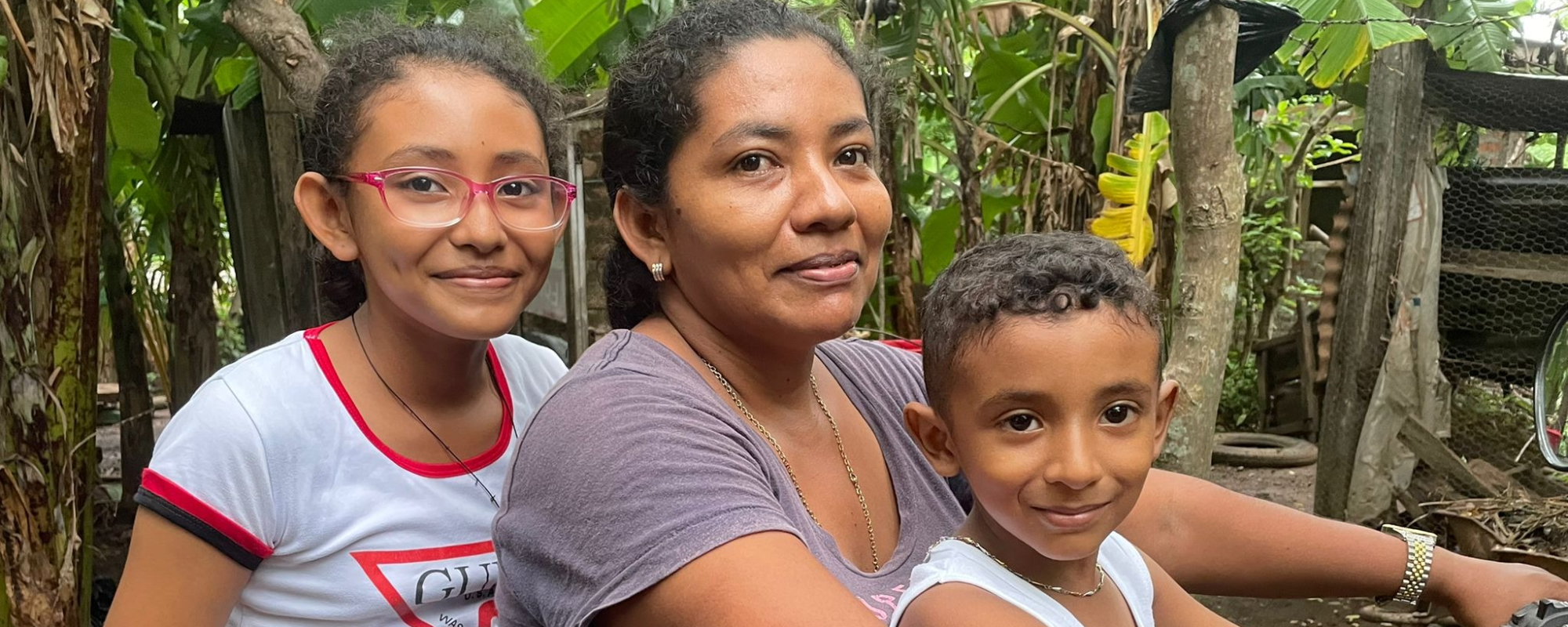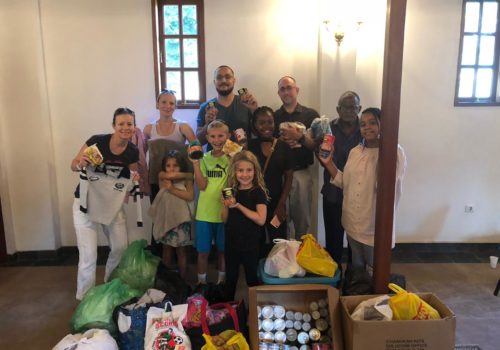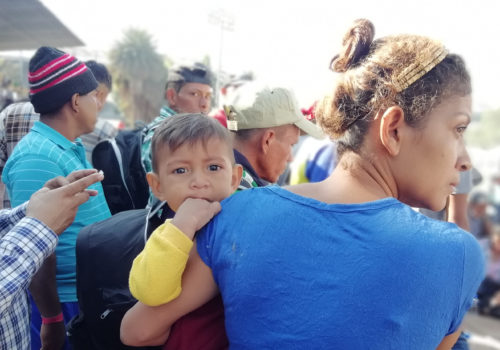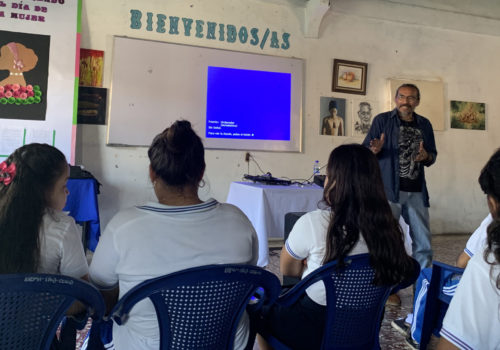In 1987, exactly 34 years ago this month, I arrived in Costa Rica to begin my two-year Institute of Current World Affairs fellowship. My area was Central America and my theme was how foreign assistance arriving in the form of military inputs impacts—or distorts—the development of democracy in what we once called Third World countries.
To that theme I added another, which was the impact of modern mores on the traditional societies of the region, the villages and hamlets and small towns whose timeless way of life dated back to long before the Spanish conquest.
I arrived during the peak of the Cold War, a war we would have no way of knowing was about to end, literally, within months of my ICWA sojourn. With the fall of the Berlin Wall and the swift unravelling of civil wars across this same region, the world changed practically overnight. China’s Tiananmen Square standoff, the fall of regimes from Warsaw to Belgrade (but not Havana!) would all happen in 1989.
But there was no reason for me to suspect, much less predict, such developments at my ICWA start. How could I?
Starting in Costa Rica was crucial. The country was famous in the region not simply for its Cold War neutrality but for its fervid, we might even say “militant” anti-militarism. No armed forces at all, this in a region where power seldom changed hands peacefully. I came eager to study Costa Rica’s efforts to resist US pleas to “man up” and join the resistance (to Nicaragua, right next door, but also to Panama) and assist Washington’s efforts to contain communism’s spread to Honduras, El Salvador, Guatemala and, as Jeanne Kirkpatrick was fond of warning, Mexico.
What I found was more than a US Cold War battlefront. Who knew that Taiwan also was fighting a Cold War foe in Costa Rica, “continental China,” the PRC which was relentlessly removing Taiwanese embassies everywhere. Taiwan, whose anti-communist diplomacy was the subject of my pre ICWA work as an investigative reporter, still had embassies across Central America—in every country, indeed, except Nicaragua—and had an active military presence in all of them. So did Israel, also with the exception of Nicaragua. So did Venezuela.
As for the “villages” component, Costa Rica served as an important “post traditional” society from which I was able to compare and contrast those more “backward” neighbors in the rest of the region.
I mean “backward” as a euphemism, not a pejorative. In 2021, as much as in 1987, I still see the many ways that holding to tradition far exceeds the benefits of modern life—in nutrition, social cohesion, public health and many other areas, both material and spiritual. So, let’s say this: Costa Rica was in 1987 a country where even its rural poor had access to electricity and running water. In much of the rest of the region, the rural poor did not.
I had a chance to begin my village-comparing study within days of submitting my first ICWA newsletter, internally named JAM-1, in late July. I was in Nicaragua, which I had visited only once before, assigned with a mixed group of church workers from the US, Guatemala and the Dominican Republic, to work in a small Nicaragua village near the Costa Rican border. I identified the village in newsletters as “Pilas.” It’s actually two villages—Las Pilas and El Coyol—twin settlements hugging a dusty dirt road about ten miles from Rivas, the provincial capital.
JAM-2 was deemed so detailed, and so moving, by ICWA director Peter Bird Martin that somehow someone (not I), saw that it was published as the lead “centerfold” article in the progressive tabloid In These Times, a publication I had never written for but did know as a subscriber. The fee was miniscule but the joy I felt seeing all my new insights in print was boundless. To my eyes now, it reads a bit naïve. But the sentiment was real, and still is.
We were supposed to be in Rivas only two days. But together with my partner, the photographer Donna DeCesare, I decided to stay longer, starting with a week in August and then stretching these visits into calls of about one per month. Sometimes it’d be for a weekend between drives from Costa Rica into other parts of Nicaragua; sometimes for a week or more. Las Pilas/El Coyol and its population of church workers, government officials, demobilized soldiers and farm families became my families over the two years of my ICWA fellowship. After I returned to the US and began work as a financial journalist in the early 1990s, I made it back to the villages a few more times, and once more in 2003.
And then again this summer, which is where I will begin to report on what it feels like to be a former ICWA fellow returning to the fields where he toiled so long ago. Your basic “How could I have known then what I know now, if I hadn’t had the ‘then’ part yet?” quandary, explained.
First I should say how grateful I am to ICWA and the chance the institute gave me to know people like Carlos Alberto Gonzalez, his mother, Doña Maria Pilar, the families of Doña Socorro Bustos and Alejandra Moraga, all of whom figured prominently in the newsletters I filed from Las Pilas/El Coyol starting in 1987.
I should also mention the man who most influenced me, pre ICWA, the journalist Richard Critchfield who, unbeknownst to me, had an ICWA history of his own. Dick was an early “genius” journo designated by the MacArthur Foundation whose 1981 book Villages motivated me to be an investigative journalist in Latin America. Dick’s technique was, like ICWA’s, full immersion into village life, bonding with families he would revisit again and again across the decades—in the Punjab, in the Philippines, in Mexico and Mauritius and Morocco.
I fell in love with his book while producing a newscast at NY’s WNEW-TV station. During the only vacation I took in those two years in that newsroom, I went on a pilgrimage to Berkeley, Ca., to meet the book’s author. But it wasn’t until I met Peter Martin and told him of my love for Villages that I learned Critchfield also was an ICWA benefactor, giving up part of his MacArthur stipend to fund future Critchfields (forgive me) in the Critch—”field.”
Sam Levy was one, Kathy Hendrix and Kenneth Cline were the others. Together with other ICWAns, the four of us helped fund a Critchfield fellowship of our own for Elizabeth Hawkins, which recently concluded in El Salvador.
Much as my hometown’s Framingham Heart Study has informed medical professionals for over half a century, so my own study of this little Nicaraguan crossroads has served as a template for four decades of my journalism work, and one near-decade as a press officer for the United Nations migration agency, the International Organization for Migration, from which I retired in March this year.
In April, IOM sent me to Costa Rica as a consultant. I was determined to get back to Las Pilas/El Coyol as soon as possible, but due to the pandemic and new border restrictions, that was much easier hoped for than accomplished.
I said I would start with the village. Consider this, after some thousand words of throat-clearing, my nutgraf : If you’re going to report on poor, rural places, you should start out reporting in the poorest and ruralest place you can find. You do that in a village, not in a capital. In Nicaragua, you do it in places like Las Pilas/El Coyol.
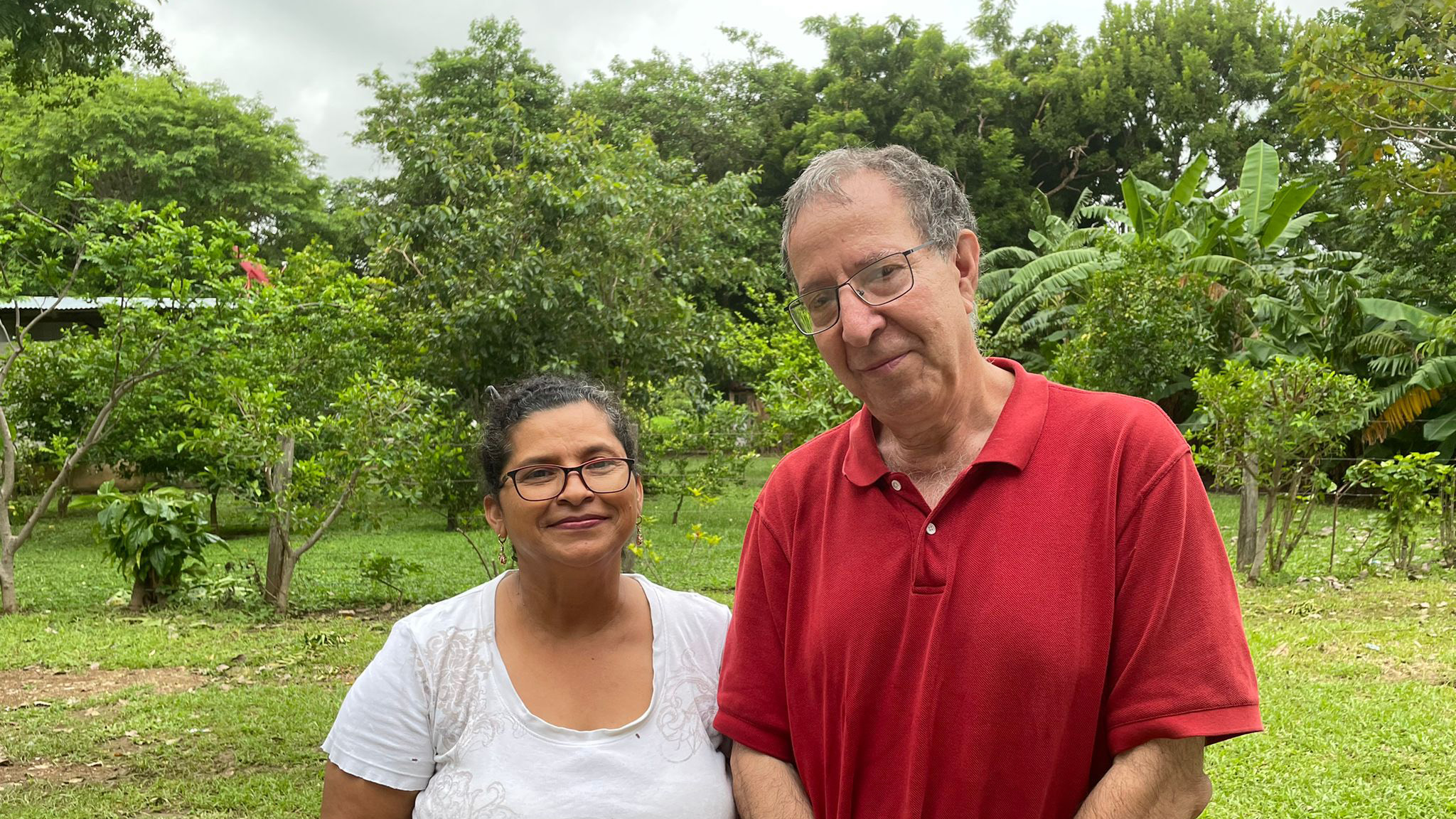
During my fellowship, I took a lot of flak from fellow reporters for spending so much time there, but it was worth it. They demanded to know: Do you really sleep in their shacks, eat their food, hang out all day with the same campesinos, asking questions? That’s how you cover Nicaragua?
My rebuttal usually was: And have you really never spent even one night doing that, seeing how 99 percent of the country lives? Who, then, is covering Nicaragua and who isn’t?
Over time, a few colleagues came to be admirers of my technique, especially the legendary photographer Bill Gentile (who, I am happy to report, has a new book out on the region. Bill teaches backpack journalism at American University and has a Nicaraguan brother-in-law who worked with me at IOM).
In addition to the In These Times spread, Donna’s photos from Las Pilas/El Coyol also were featured in one of the era’s great photo compilations Nicaragua: Ten Years of Revolution. At the time, the journos putting the volume together noted they were grateful for her work because they realized, they said, “we had no pictures of everyday life.” My reaction, however muted, was “Why am I not surprised?” They had Ortegas and Chamorros and every news event under the blazing sun. But actual, everyday Nicaraguans? Not so much.
Village life unfolds subtly, but I found I could learn much in 48 hours, especially being away from telephones and other distractions. I could see how little changes affect a place like Las Pilas bigly while big things, like geopolitics barely impact life at all.
In my view, materially these people are infinitely better off than they were in 1987, but I don’t know if that’s more because the Sandinistas stuck rigidly to their principles or because they loosened them. Also, I noted on this latest visit, as I did in 1987, that the social dynamics vary greatly from household to household. A tyrannical mother-in-law can dictate how a family lives much more thoroughly than a government can.
Individually, I saw people living full lives according to their ambitions, without having to toe any “revolutionary” norm. Of course, some villagers are pro-government and some are anti-government, and sometimes there are disagreements within families. They know, in a general way, that press censorship is wrong, and that locking up political opponents (probably) is wrong.
But they are utterly indifferent to those things. Is there enough food? Will there be enough rain? Can I afford to ride my motorcycle five miles to the nearest gas station, or can I spare the extra five pennies it costs buying a liter from a local bootlegger (in this case one of the members of the Gonzalez clan I stayed with)? Those are the daily concerns.
I re-discovered the beautiful, intense, pro-Sandinista Alejandra Moraga, who used to discourse on the social revolution within the revolution and within the Catholic Church as she brilliantly led Bible classes by oil lamp on hot nights. Alejandra, seen in one of my newsletters resplendent in her camouflage army uniform, is living openly now with her same-sex lover, a “compañera” she apparently already was involved with when we knew her in the 1980s. No one cares now and, it turns out, no one cared back then, either. The Revolution was nowhere near as doctrinaire as most reporters assumed, whether that was something they admired or railed against.
I found this month, as in 1987, that you can learn much in 48 hours, especially if you’re away from telephones and other distractions. You can see how little changes affect a place like Las Pilas bigly.
From 1987 to 1989 covering this village meant we mainly covered hunger, which was certainly a byproduct of Cold War tensions. Or was it? In every decade I have visited I discover that, ultimately, this place is simply so removed from what reporters talk about when they talk about Nicaragua. Whether it was the Cold War, the ruling parties, the oligarchy, the US Congress (who can forget Jesse Helms basically demanding to be the one to select Nicaragua’s next president?)—all these things that consumed the press corps, and still do, don’t mean much of anything to a majority of the country’s population living like these villagers.
Their hunger was always real, but it was never “news.” So, to a degree, its root cause becomes almost irrelevant.
My visit this summer also gave me a chance catch up with the Bustos clan, whose matriarch, Doña Socorro, turns 95 this month. With her 12 children, she’s the reason I know the Spanish word for Lilliputian (“Liliputense”) for the many times they would gang up on me, wrestle me to the ground and romp all over me during our monthly visits. Socorro still has jet black hair that her daughter, Amparo, insists remains her natural color. I asked Socorro how many grandchildren she has. She said “at least cincuenta (50) but possibly ochenta (80).”
The Bustos clan reveals the endurance of village life. Despite the hardships, no one starved, almost all finished school and, even more remarkably, none of those 12 kids emigrated. Which is amazing considering the unguarded Costa Rican border can be reached on foot from her home in an afternoon.
An 18-kilometer road now connects these villages to the town of Tola to the east and, to the west, Rivas’ Pacific coast. Where there once was only dust and, during the rainy season, puddles nearly the size of Lake Nicaragua, now there is a beautiful highway fashioned from interlocking concrete blocks that fit together like Lego pieces. It is without a doubt the single most important change I noted.
In place of dust and rock and mud, people now travel on a road that gets them almost anywhere they need to be in minutes. Most have motorcycles, a few have cars; 34 years ago, these were unheard-of luxuries. They also have buses to take them to jobs all over, including the dozens of small hotels and grand resorts dotting a coastline that barely had fishing shacks when I used to visit.
This road transformed this corner of Rivas and may well be the principal reason so few from this district have migrated, even though Costa Rica is literally within walking distance. In fact, almost no one here has left unless it’s to go to Managua for a government job or to do their military service. Could it really be that easy to curb migration? Probably.
Which gets me back to the story of the gasoline bootlegger, in whose house I slept. It’s actually hilarious: the government oil monopoly sells him the gas but looks the other way when he resells it, unauthorized. The company’s reasoning is simple: if we don’t allow guys like him to sell for us, we won’t sell much gas at all, because so few people can afford to burn gas on a trip to buy gas.
Julio Gonzalez manages to get 70 liters a day on the sly each morning, ferrying it to his makeshift workshop before dawn in a tank strapped to the back of his own motorcycle. He charges 44 cordobas per liter, a ten per cent markup over what a licensed gas station charges, eking out a living of about $7 per day with sales he concedes are “clandestine.” Most customers are neighbors accustomed to gassing up one liter at a time. He also offers free air for their tires, another convenience that saves them long rides into town, which also burn fuel.
The economics of Julio’s life are stark. Of course, some know-it-all reporter (me, say, back in the day) could take all this as evidence of Sandinista corruption or Sandinista inefficiency or Sandinista complicity with the black market—things reporters rarely choose to write about unless a government Washington doesn’t like is in power. The same economics are in play whenever a pro-American opposition party was in power here, too, which, actually, was 18 of the last 30 years. But what a reporter may consider a scandal under a regime that Washington hates won’t be a scandal under its opposition. That’s another hole in our reporting I am reminded of in places like Las Pilas/El Coyol.
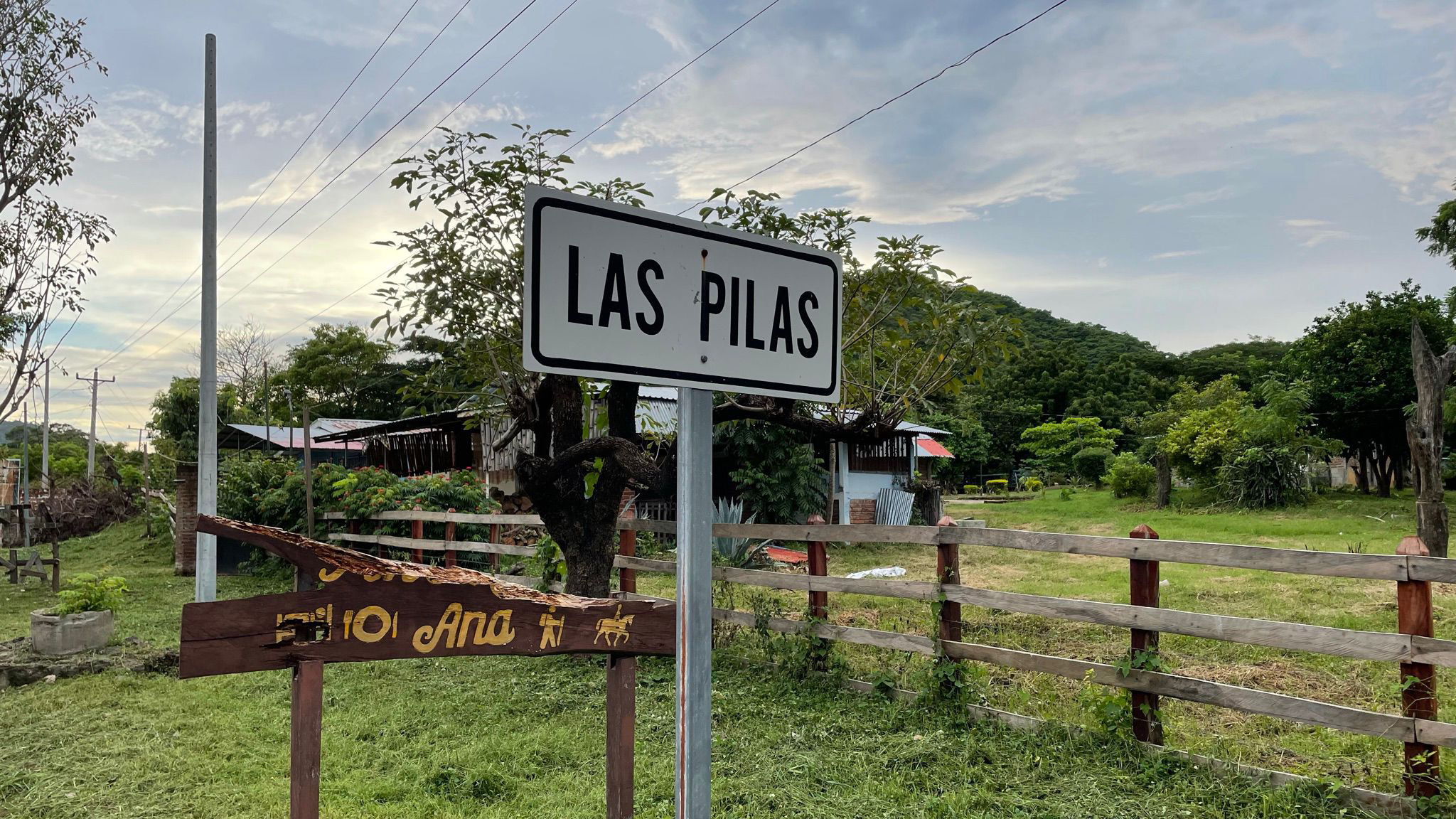
Which brings me to Carlos Alberto Gonzalez. The 19-year-old protagonist of my In These Times article, was a militant Sandinista when we met. He also was a bit of a village test case for how well a simple peasant could be groomed into a trusted soldier in the Revolution. Today he is 52, has two grandchildren and is as pro-Sandinista as ever.
No doubt, the Revolution has been good to him. He was given land to farm rent-free in 1987 then again, in 1991, when the first non-Sandinista government was elected under Violeta Chamorro. That time he received five acres of unused land that today sits on that same beach highway that was dirt and rock in his childhood. I asked him, candidly, was the 1991 acquisition part of the notorious “piñata,” when state officials made off with whatever they could carry—desks, chairs, those East German trucks and who knows what else?
Si, he replied “la piñata” which he quickly reminded me was a “legal, formal Reforma Agraria” that bestowed plots on thousands of loyal Sandinista followers.
He then proceeded to explain that “thousands and thousands and thousands” of peasants ended up selling their land back to the “oligarchy” during the course of three separate liberal (that is, not Sandinista) administrations and are now, again, as poor as they ever were before.
Carlos did not sell his land. He built his rancho bit by bit over the last 30 years and now has a brick house for his own brood, with a second house rising next door for his oldest son. He has cattle and goats and chickens and pigs and two pet iguanas he hopes to breed for a government science project. A troupe of howler monkeys also live in the trees above his patio. He thinks they may soon charm the American tourists he intends to offer cooking classes to through one of the nearby resorts, an off-campus attraction where guests can choose their own vegetables from his garden, pick their own mangos from his trees and select their own meat—pork, beef or chicken—for slaughter, unless they’re vegetarians. (He also asked me to help him draw up a business plan; my fee to be settled at some future date in tamales).
Mostly he works as a peasant. But he also has a modest government job as a watchman at a maternity hospital that pays him about $5 per night. Like farmers everywhere, he needs a second income to make ends meet. He’s hardly prosperous.
As for politics, he sticks to the party line: All those ex-Sandinistas denouncing the current Sandinistas were never “real” Sandinistas to begin with, he explained to me. He understands the opposition to today’s leadership but nonetheless thinks they will be reelected in November.
As for my return to Costa Rica, just as I focused too much of my attention as an ICWAn on viewing events through the lens of military aid policy, I’m probably guilty of the same infraction now, focusing too much on where a country sits on the migration spectrum.
So, without apology, I will say my impressions of Costa Rica 34 years later have lots to do with my feelings about its migration performance, which is, in a word, extraordinary.
I came here to help the IOM mission work on its communications strategy. As I wrote in my summary report “Costa Rica has a remarkable history in migration, and has made itself one of the region’s most admired actors in a drama that has both inspired and frustrated migration managers and policy observers for the better part of a century. Costa Rica’s success has come through hard work and thoughtful execution of its policies.”
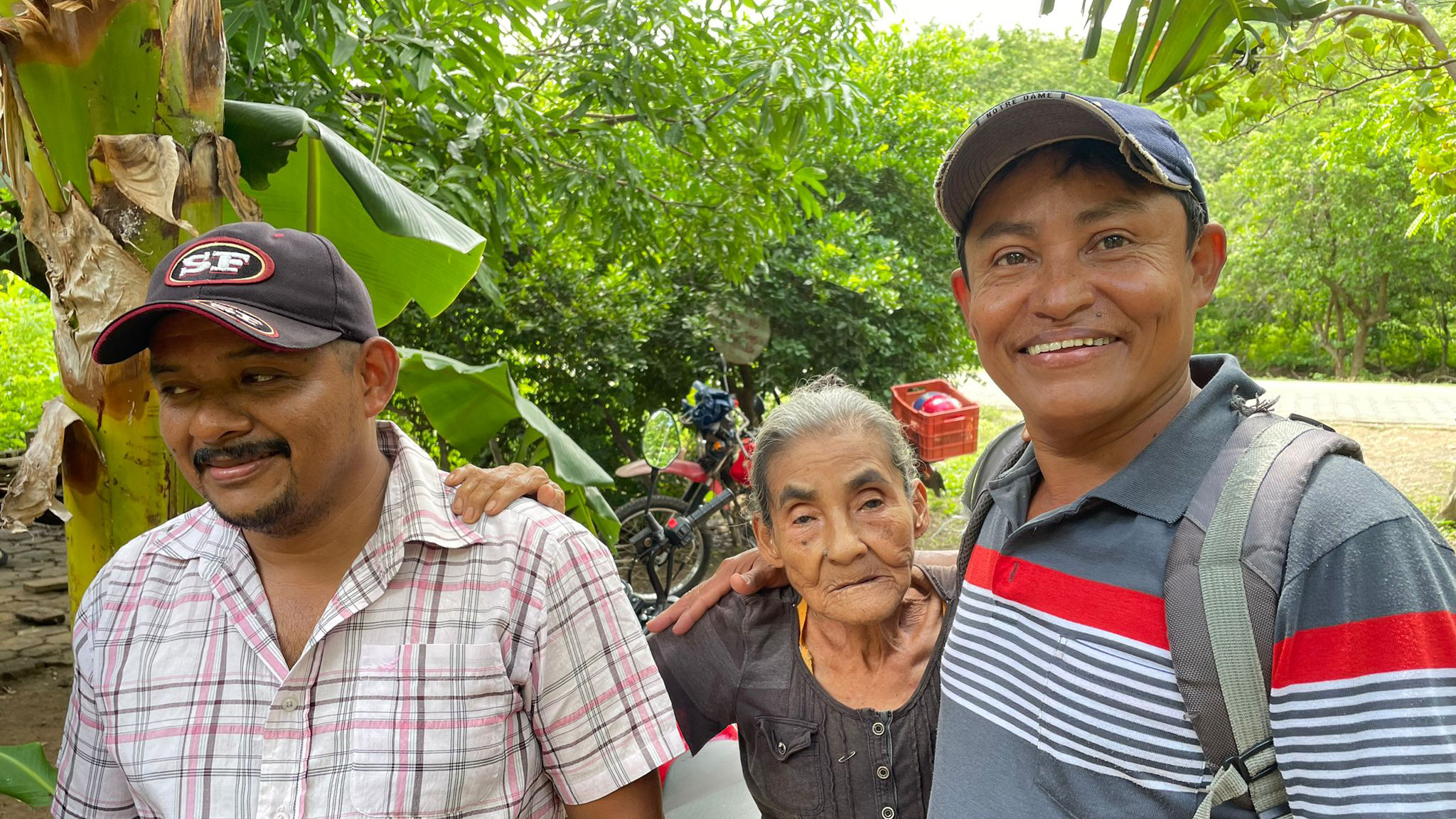
In addition to absorbing almost 400,000 Nicaraguans since the 1980s—estimates are of close to a million Nicaraguans, all told, including second and third generations born here—Costa Rica hosts another 150,000 assorted Venezuelans, Colombians, Cubans, Mexicans, Dominicans and other Central American migrants and refugees into a population of just over five million residents.
Its refugee numbers mirror those of Lebanon, another small country bordering a much bigger one with an enormous population displacement problem while the overall presence of foreign-born residents approaches the US’s of level 15 percent. That makes Costa Rica one of only two Latin American countries taking in more migrants than they send out (Chile is the other).
Indeed, almost no one leaves Costa Rica. Its population in the US numbers around 80,000 according to immigration officials I talked to (although that number seems low to me). That compares with a combined total of over four million Salvadorans, Guatemalans, Hondurans and Nicaraguans. To Spain, an increasingly popular destination for Latin Americans, Costa Rica has sent fewer than 8,000—compared with perhaps a million Colombians, Ecuadorians, Venezuelans, Cubans, Hondurans, Dominicans, Nicaraguans and Salvadorans.
These data reveal a society that not only is open to migration and tolerant of new arrivals, but also one not driving its own citizens abroad under pressure from all these newcomers. Above all, the data show a government policy that works, and punches considerably above its weight when managing what has become a global concern.
That is, how to engage with the hundreds of millions of men, women and children already on the move? How to prepare for them? How to welcome them? How to integrate them for the benefit of all? The fact that so few Costa Ricans feel compelled to leave indicates to me that a million+ outsiders do not increase crime or overcrowding or drive down locals’ wages. If anything, they improve all three of those metrics in ways anyone can see. They work construction (easing overcrowding), they spend their wages (increasing incomes and reducing crime) and they tend to be law abiding to avoid deportation. Etc.
Part of Costa Rica’s remarkable migration saga is the sheer variety of migrants arriving here, from the world’s poorest to some of the world’s richest. When I first visited in the early 1980s, the country’s pensionado/rentista program allowing tax-free status for affluent retirees was well in place, though barely a decade old. It included many retired and not-so-retired US and Canadian nationals in the prime of their working years, professionals who bought homes, operated businesses and toiled as journalists and other types of “borderless” knowledge workers from a Costa Rican base.
It’s not difficult to imagine the many ways this program has affected migration in Costa Rica, both in terms of attracting outsiders seeking jobs (Nicaraguans, principally) but also in terms of deterring Costa Ricans from migrating themselves.
Retiree estimates begin with the 33,000 US and Canadian citizens officially registered here as pensionado/rentista visa holders, and climbs to something above what the US Embassy says are 100,000 US citizens permanently living here. It could be well higher and, to be clear, does not include repeat visitors who enter as tourists.
A conservative average of $2,500 per month per retiree—which is about the minimum US Social Security pays its beneficiaries—computes to $1 billion per year for every 30,000 pensionados. So, depending on which end of the estimate range we take—the 33,000 retirees officially registered, or the US State Department’s 100,000+ estimate—we should calculate spending by these affluent migrants puts at least $1 to $3 billion into circulation each year.
It’s probably much more, particularly after factoring in new home construction and other up-front expenses.
Early morning in Las Pilas/El Coyol, los macheteros say they work only till 9 a.m., by which time it’s just too hot to move
What’s critical to understand is not just the money they put directly into circulation. It’s also what their lifestyle demands create and why those demands multiply incentives for locals to stay.
It’s a rule of thumb among those I have spoken with here that for every expatriate homeowner who resides in San Jose, at least three jobs are created for either a local or a migrant from Nicaragua.
As an ICWA fellow, I traveled several times to tiny San Vito de Coto Brus, in the coffee highlands near the border with Panama. I went again this summer as an IOMer and learned the same retiree math applies there, too. The vice mayor of San Vito told me some 300 pensionados now live in the canton. About half hail from the US, the rest from Canada and Europe. Combined, she said, they have created “at least” 1,000 new jobs.
They’ve also created new tourist destinations, including one for bird watchers founded by an ornithologist from Cornell University. They’ve also driven up demand for organic produce, which has driven local farmers to diversify.
Notably, for the least skilled in the country’s workforce, the kinds of jobs these expatriates create are precisely the same jobs migrants from the rest of Latin America risk their lives to reach in North America. Cleaners, elder care workers, babysitters, landscapers, security guards, cooks, drivers—these are the identical, on-site jobs millions of Latin Americans seek every year, usually spending weeks on the road after raising thousands of dollars to pay criminal gangs to be smuggled across international borders.
For Costa Ricans, it’s just the reverse. Those jobs, in effect, travel to them. Starting in the 1970s, families who might have mortgaged a home or farm or sold livestock to send a daughter or son on a dangerous journey north instead could instruct them to serve similar customers within Costa Rica’s borders.
This is no small accomplishment, and it had a multiplier effect. There were family savings protected, yes but also opportunities for teenagers to complete high school and seek training for even better jobs in the future.
There also were, undoubtedly, lives saved. IOM’s Missing Migrants Project, in the seven years since it began compiling data, has recorded thousands of migrant deaths in the Americas. Only three have been of Costa Ricans. Deaths avoided, like other benefits of Costa Rica’s pensionado migrant policy, may be hard to measure. Yet they are impossible to deny.
The retirement industry, then, not only kept poor Costa Ricans from shouldering the burden of an expensive migration to North America. It also opened more sophisticated, better-paying jobs for more educated Costa Ricans, as doctors and attorneys and architects and tax advisers and agronomists for pensionados who decide to retire on a finca or office managers for those starting a business.
Indeed, retirees created an environment where more Costa Ricans could aspire not only to find jobs but launch careers. This, too, dampens the urge to migrate and draws talent into Costa Rica from the rest of Latin America.
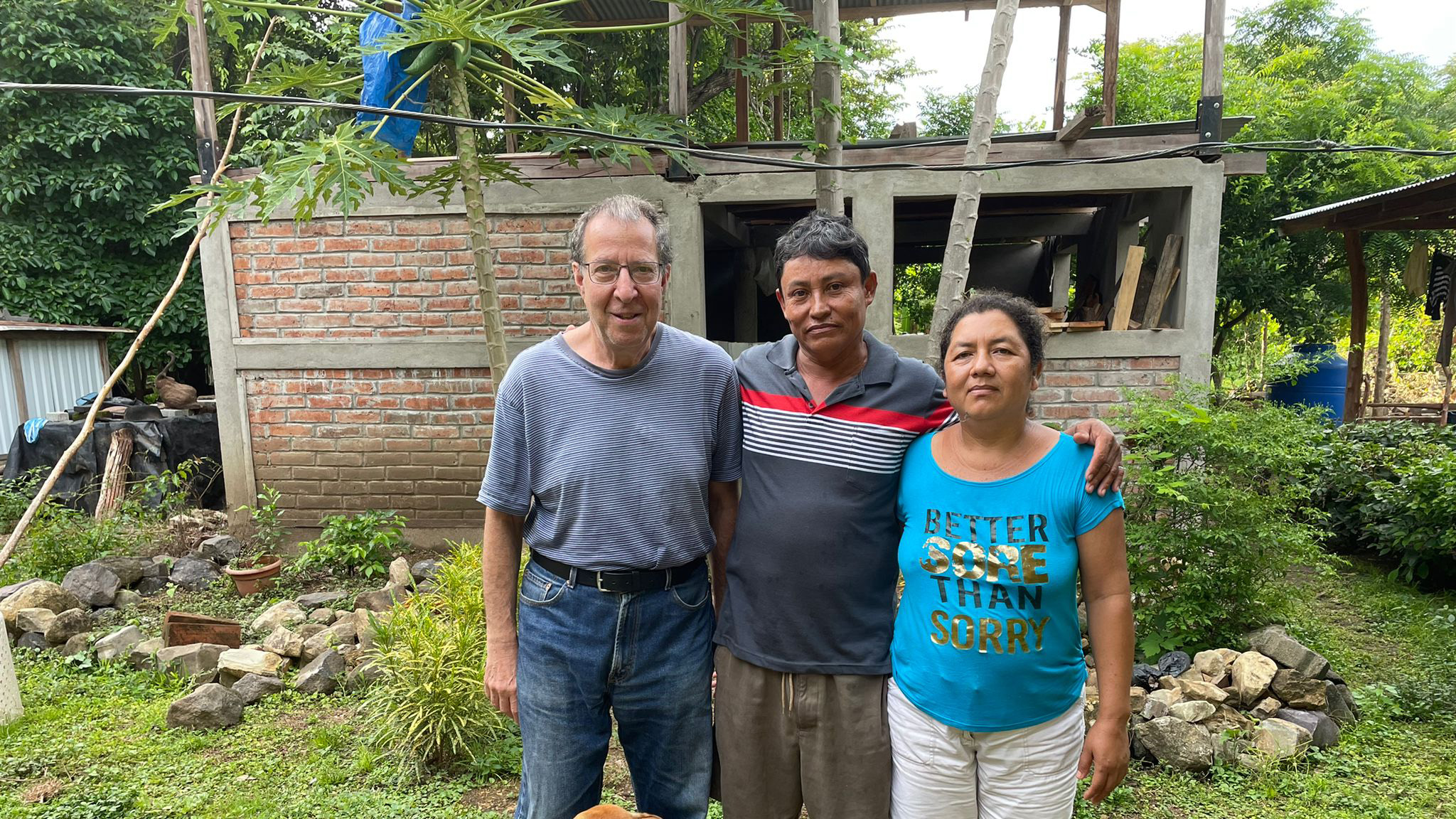
There is a downside, however.
I’ve now been here almost 12 weeks and have heard plenty about rising inequality. People complain that a weekend on the beaches in Guanacaste, a perk almost any Costa Rican could afford in the 1980s, has become almost unaffordable for all but the wealthiest families. Foreigners own almost all the beachfront here, and even tourist areas built around public parks post prices that may look like bargains to Americans but whose costs are out of reach for most locals. Moreover, very few locals can live on the wages retirees pay.
But there’s a solution: more inequality. By importing Nicas, Guatemalans, Hondurans, Cubans and Salvadorans willing to work cheap, those laborers push Costa Ricans into better paying jobs higher up the service chain. In effect, allowing another country’s rich to exploit other countries’ poor seems to be a model that works for Costa Rica, and creates more options for their own nationals in the vast middle.
In short, a Costa Rican is today unlikely to be the landscaper at any of the gated communities where many retirees reside. But Costa Ricans run the landscape service companies, as well as the more upscale services retirees need. Costa Ricans, by the same token, have largely disappeared as coffee harvesters or sugarcane cutters. But there are more jobs than ever at Starbucks, or at the new Intel chip plant or the Amazon call center, Latin America’s biggest.
What comes next is a bit of a puzzle. Costa Rica’s median age—the point at which half the population lies above and half below—stands today at 33 years. That is significantly older than those of Guatemala (23 years) Honduras (24), El Salvador (27), Nicaragua (26.5) and the Dominican Republic (28).
Costa Rica’s birthrate has been plummeting for years, with the country now on the verge of becoming one of Latin America’s first “aged” countries. A 2013 United Nations document pointed out Costa Rica would soon join the ranks of “aging” countries worldwide, where older Costa Ricans consume more of the country’s goods and services than does its youth.
The study predicted that next year, 2022, the current cadre of prime working-age adults—those 20 to 39 years old—will peak. It further stated that by 2024 “Costa Rica is expected to become an aged economy,” one of Latin America’s first, to be joined soon by Brazil, Chile, Cuba and Uruguay.
That means that around 2.6 million Ticos are just now beginning to exit the labor force, starting next year, averaging some 100,000 departures annually for the next 30 years. In short, Costa Rica—which already experiences noticeable manpower deficits in some sectors, especially agriculture—will require more migrants in the years just ahead, not fewer.
That’s good news for Costa Rica’s neighbors, particularly Guatemala and the Dominican Republic, which face the prospect of finding work for some 15 million citizens in the next two decades. Those countries that already have come to depend on Costa Rica as a pressure release valve for their populations will be joined by others.
Which is also something I never would have anticipated as a fellow. My first newsletter 34 years ago decried the runaway population growth in an increasingly crowded capital. How was I to know a demographic peak was nearly at hand, and that Costa Rica soon would need to import poor people just to sustain itself?
Conceivably Costa Rica now faces not only a shortage of its own children, but a decade from now, also a shortage of migrants.
So, that’s what I know now that I didn’t know then. How could I?

